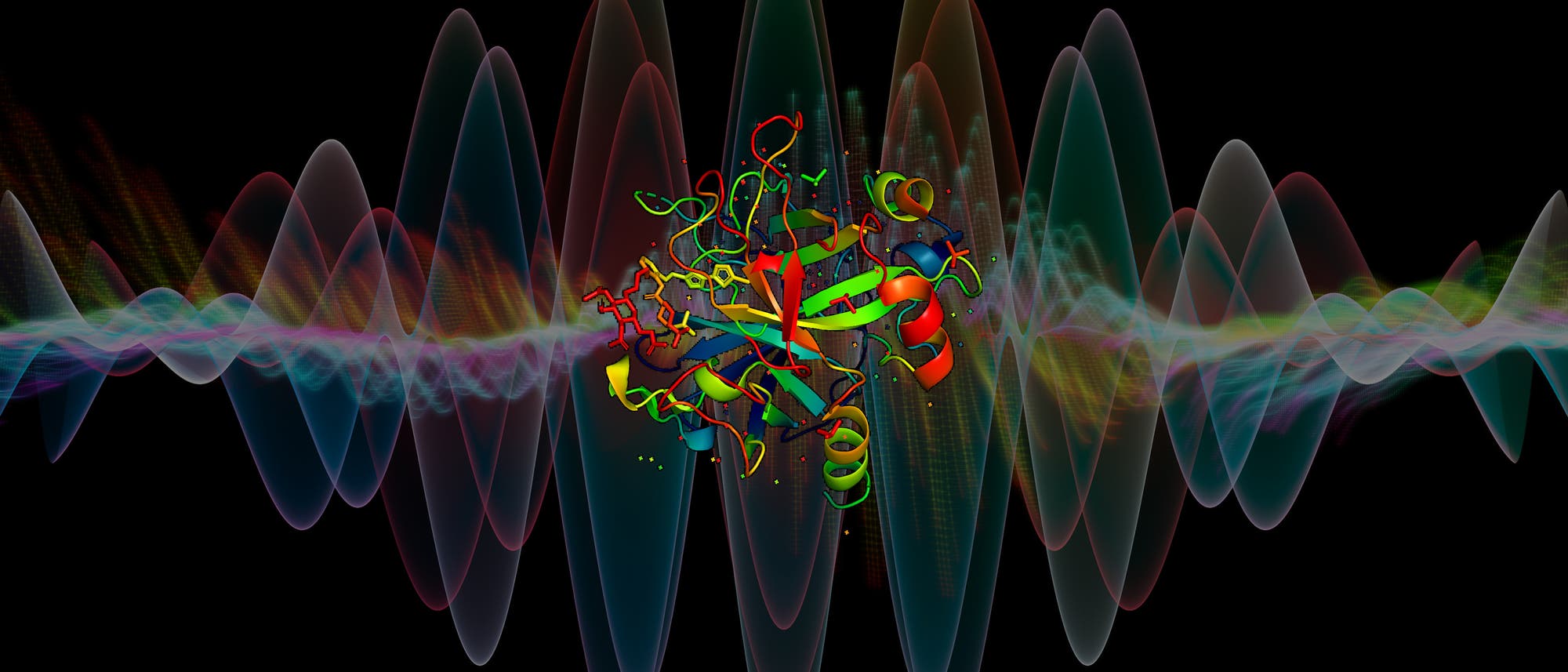Modellansatz: Waveguides

This is the third of three conversation recorded during the Conference on mathematics of wave phenomena 23-27 July 2018 in Karlsruhe.
Gudrun is in conversation with Anne-Sophie Bonnet-BenDhia from ENSTA in Paris about transmission properties in perturbed waveguides.
The spectral theory is essential to study wave phenomena. For instance, everybody has experimented with resonating frequencies in a bathtube filled with water. These resonant eigenfrequencies are eigenvalues of some operator which models the flow behaviour of the water. Eigenvalue problems are better known for matrices. For wave problems, we have to study eigenvalue problems in infinite dimension. Like the eigenvalues for a finite dimensional matrix the Spectral theory gives access to intrinisic properties of the operator and the corresponding wave phenomena.
Anne-Sophie is interested in waveguides. For example, optical fibres can guide optical waves while wind instruments are guides for acoustic waves. Electromagnetic waveguides also have important applications.
A practical objective is to optimize the transmission in a waveguide, even if there are some perturbations inside. It is known that for certain frequencies, there is no reflection by the perturbations but it is not apriori clear how to find these frequencies.
Anne-Sophie uses complex analysis for that. The idea is to complexify the (originally real) coordinates by analytic extension. It is a classic idea for resonances that she adapts to the problem of transmission.
This mathematical method of complex scaling is linked to the method of perfectly matched layers in numerics. It is used to solve problems set in unbounded domains on a computer by finite elements. Thanks to the complex scaling, she can solve a problem in a bounded domain, which reproduces the same behaviour as in the infinite domain.
Finally, Anne-Sophie is able to get numerically a complex spectrum of frequencies, related to the quality of the transmission in a perturbed waveguide. The imaginary part of the complex quantity gives an indication of the quality of the transmission in the waveguide. The closer to the real axis the better the transmission.
References
- A-S. Bonnet-BenDhia, L. Chesnel and V. Pagneux:Trapped modes and reflectionless modes as eigenfunctions of the same spectral problem Proceedings of the Royal Society A, 2018, doi 10.1098/rspa.2018.0050
- A-S. Bonnet-BenDhia: Mathematical and numerical treatment of plasmonic waves at corners of metals and metamaterials Emerging Topics in Optics, IMA, Minneapolis, 2017
- A-S. Bonnet-BenDhia, L. Chesnel and S. Nazarov: Perfect transmission invisibility for waveguides with sound hard walls Journal de Mathématiques Pures et Appliquées, 2017, doi 10.1016/j.matpur.2017.07.020
- A.-S. Bonnet-BenDhia e.a.: A method to build non-scattering perturbations of two-dimensional acoustic waveguides Math. meth. appl. sci., vol. 40, pp. 335–349, 2015 doi 10.1002/mma.3447
Podcasts
- S. Fliss, G. Thäter: Transparent Boundaries. Conversation in the Modellansatz Podcast episode 75, Department of Mathematics, Karlsruhe Institute of Technology (KIT), 2015.
- M. Kray, G. Thäter: Splitting Waves. Conversation in the Modellansatz Podcast episode 62, Department of Mathematics, Karlsruhe Institute of Technology (KIT), 2015.
- F. Sayas, G. Thäter: Acoustic scattering. Conversation in the Modellansatz Podcast episode 58, Department of Mathematics, Karlsruhe Institute of Technology (KIT), 2015.



Wenn Sie inhaltliche Anmerkungen zu diesem Artikel haben, können Sie die Redaktion per E-Mail informieren. Wir lesen Ihre Zuschrift, bitten jedoch um Verständnis, dass wir nicht jede beantworten können.